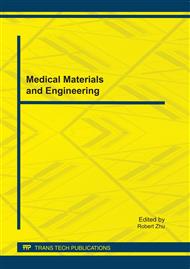p.421
p.426
p.431
p.441
p.446
p.451
p.459
p.465
p.469
Study on the Antioxidation Activity of Peanut Antioxidant Peptide
Abstract:
Use peanut protein powder as the raw material, the five kinds of peanut antioxidant peptides (abbreviated as AP, FP, PP1, NP and PP2, respectively) were obtained through steps of Viscozyme pretreatment and Alcalase, Flavourzyme, Protamex, Neutral protease and Papain hydrolysis, respectively. Four types of antioxidation activities evaluation methods in vitro including scavenging of DPPH free radical, reducing power, iron ion chelation and anti-lipid peroxidation were presented to evaluate the antioxidation activities of peanut antioxidant peptides. The order of antioxidation activities of five antioxidant peptides was PP2>AP>FP>PP1>NP by comprehensive analysis of the antioxidation experimental results. The results indicated that the optimum proteolytic enzyme for preparing antioxidant peptide was papain. Among the five antioxidant peptides, PP2 had the most antioxidation activities of scavenging of DPPH free radical, reducing power, anti-lipid peroxidation. Therefore, the research and development of antioxidant peptide with the antioxidative function by using papain is an effective approach to further exploit peanut protein.
Info:
Periodical:
Pages:
446-450
Citation:
Online since:
November 2011
Authors:
Price:
Сopyright:
© 2012 Trans Tech Publications Ltd. All Rights Reserved
Share:
Citation:


